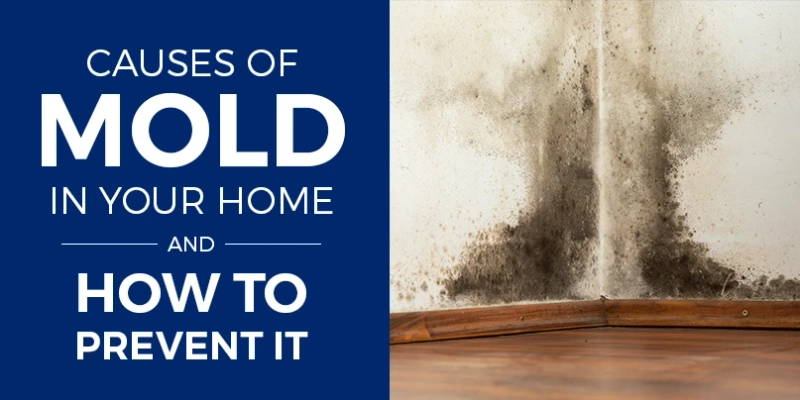If you are dealing with mold that appears on a wall, it is imperative to fix it as soon as possible. Mold is dangerous for health, especially for young children, the elderly, and people with respiratory problems. It releases mycotoxins, which can cause allergies, asthma, and irritation. This is why we must deal with the moisture problem responsible for mold as soon as possible and clean the contaminated surface. But what causes mold to appear on the walls, and what can you do to fix it? This article will reveal the answer.
What is mold?
Mold is made up of microscopic fungi that thrive in damp places. These fungi form greenish or whitish spots and emit a musty odour. In addition to making walls ugly and damaging, mold can be harmful to health. That is why the problem must be dealt with as soon as possible. To apply the correct treatment, it is first necessary to determine the causes of the appearance of mold.
Causes of mold on the wall and solutions
One has to find the source of the moisture problem to get rid of mold permanently. There are three possibilities:
1. Mold on the wall due to insufficient ventilation
When a room is not ventilated properly, it creates the right conditions for mold to grow. Much like the condensation that forms on windows, mold is a sign that the room is not well ventilated. The stale air stagnates in the room instead of being replaced by fresh air, which increases the humidity level.
It is, therefore, necessary to renew the air in the room. The first thing to do is to ventilate the room regularly by opening the windows. This method is called natural ventilation.
Unfortunately, natural ventilation is not always enough to properly ventilate every corner of a house. In this case, a controlled mechanical ventilation (CMV) system must be installed.
Have you noticed mold on the wall and think it is a ventilation problem? Call in a professional moisture handler. He will be able to establish the correct diagnosis and recommend the most appropriate solutions.
2. Mold on the wall due to water infiltration
When it’s not (or not entirely) a ventilation issue, it’s probably the moisture in the wall. In this case, where the mold is growing can reveal where the problem is coming from.
If mold is growing up the wall or on the ceiling, there is a good chance that the moisture problem is due to water infiltration. Rainwater can seep into the wall through a damaged roof, for example. The walls may also be porous or damaged.
When it comes to a roof leak, all you have to do is make the necessary repairs to stop the infiltration. On the other hand, if water infiltrates the walls because they have become porous, they must be protected. The most common method is to apply a water repellent treatment to the exterior walls. This protective layer will prevent moisture from entering the wall.
Do you think you are dealing with water infiltration? Ask for quotes from a professional.
3. Mold on the wall due to capillary rise
When mold appears at the bottom of a wall on the ground floor or in the cellar, it may be a capillary rise. This is a problem that can arise in a building with a leaky foundation. Moisture from the floor rises in the walls because the waterproofing membrane is damaged (or there is none at all).
To solve the problem, it is, therefore, necessary to waterproof the walls and dry them. Two methods are possible: the first is to inject a waterproofing product into the walls, and the second is to make a groove in the walls to install a waterproofing membrane. In both cases, it requires quite intensive work.
If you suspect that the mold on the wall is caused by capillary rise, it is absolutely necessary to call professional Certified mold inspector. Mold inspection and testing services has to be done by professionals licensed contractors and Certified Mold Inspectors who have the experience and the required equipment.


